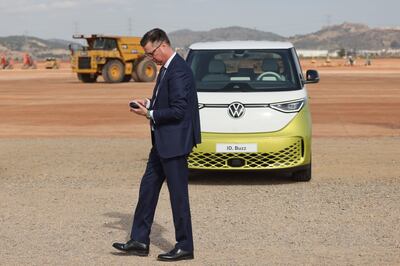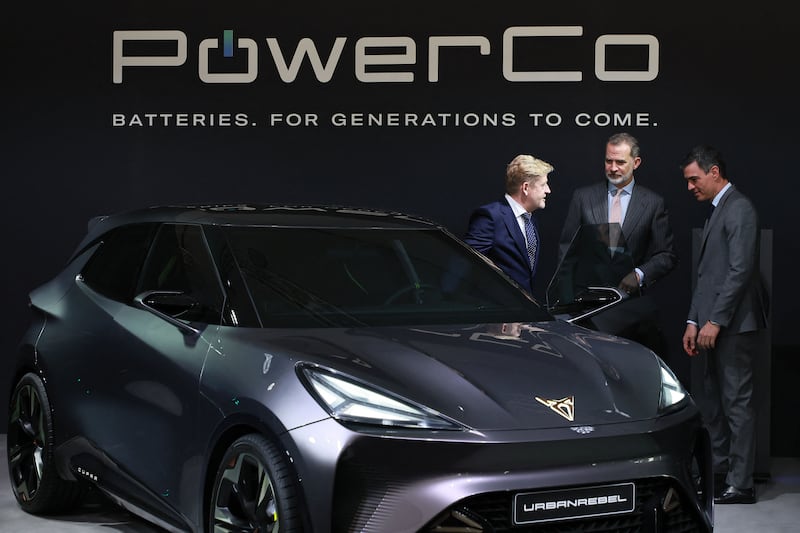Volkswagen plans to invest in mines to reduce the cost of battery cells, meet half of its own demand and sell to third-party customers, the car maker's board member in charge of technology said.
Europe's biggest carmaker wants its battery unit PowerCo to become a global supplier, not just produce for Volkswagen's needs, Thomas Schmall told Reuters.
PowerCo will start by delivering cells to Ford for the 1.2 million vehicles the US carmaker is building in Europe on Volkswagen's electric MEB platform, he said.
In the long term, Volkswagen plans to build enough cells to meet half its global battery needs, with most production capacity located in Europe and North America, according to Mr Schmall.
“The bottleneck for raw materials is mining capacity — that's why we need to invest in mines directly,” he said.
The carmaker was partnering on supply deals with mining companies in Canada, where it will build its first North American battery plant.
Mr Schmall declined to comment on further locations or where or when Volkswagen might invest directly in mines, saying the company would not disclose that information until the market was more settled.
“In future, there will be a select number of battery standards. Through our large volume and third-party sales business, we want to be one of those standards,” he said.
Making or sourcing batteries at a reasonable cost is a big challenge for carmakers like Volkswagen, Tesla and Stellantis as they seek to make electric vehicles (EVs) affordable.
Only Tesla has pledged more investment into battery production than Volkswagen, according to a Reuters analysis — although even the US EV maker is struggling to increase production and is recruiting Asian suppliers to help.
Few carmakers have disclosed direct stakes in mines, but many have struck deals with producers to source materials like lithium, nickel and cobalt and pass them on to their battery suppliers.
PowerCo, set up last year, is targeting €20 billion ($21.22 billion) in annual sales by 2030.
It is an ambitious road map for a unit not yet producing at scale. Production will start in 2025 at PowerCo's plant in Salzgitter, Germany, 2026 in Valencia, Spain and 2027 in Ontario, Canada.
Still, Mr Schmall is confident the carmaker can expand quickly, and must do so if it wants to build an affordable EV, in which 40 per cent of the costs come from the battery.
Volkswagen released on Thursday the details of a €25,000 EV it aims to sell in Europe from 2025.
China's BYD, which also produces batteries, is far ahead of Volkswagen in the affordable EV race and outsold the German carmaker for the second time in four months in China in February.

In Volkswagen's €180 billion five-year spending plan, up to €15 billion is earmarked for its three announced battery plants and some raw material sourcing.
The carmaker has so far nailed down raw material supply until 2026 — by which time the German and Spanish plants will be in operation — and will decide in the next few months how to meet its demand from then on, Mr Schmall said in the interview.
It has also ordered some $14 billion in batteries from Northvolt's Swedish plant.
“Bringing down battery costs further is a challenge,” Mr Schmall said. “We're using all the instruments with PowerCo.”
Asian producers like CATL, LG Chem and Samsung SDI dominate global cell production, with almost half of planned battery cell capacity in Europe by Asian companies.
Half the staff at Volkswagen's PowerCo are industry veterans from Asia, Mr Schmall said, enabling the battery unit to enter the industry at the top of the learning curve.





